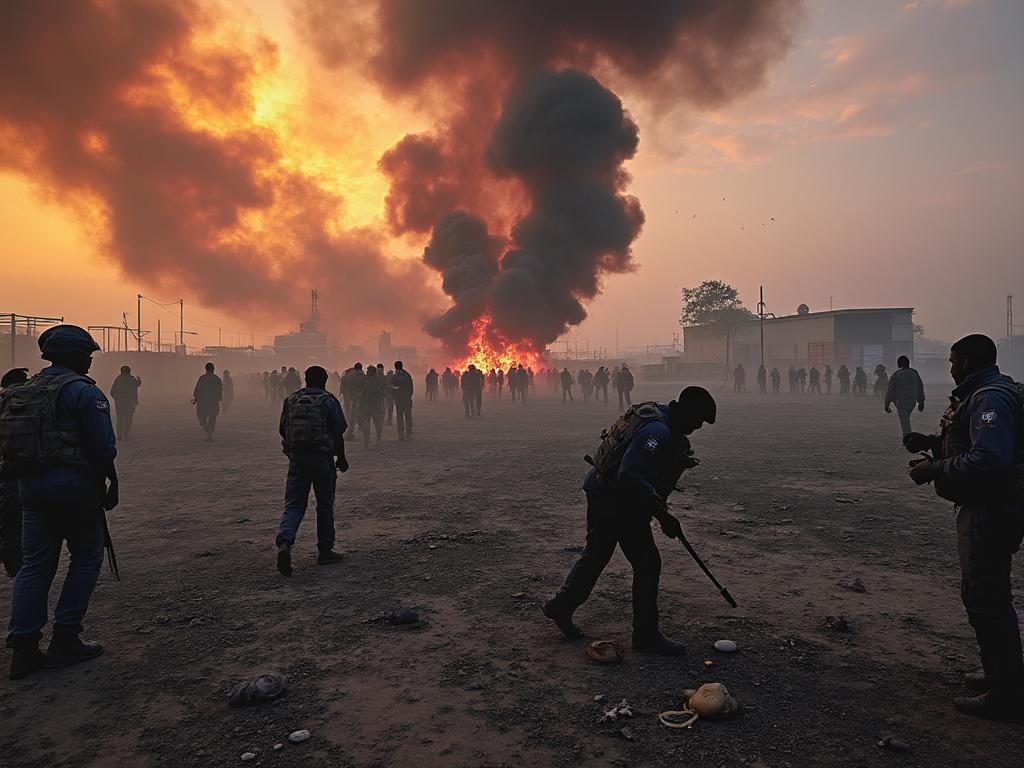
Global Humanitarian Response Faces Significant Challenges Amid Ongoing Conflicts
Major humanitarian crises unfold in various regions as global aid organizations struggle to meet escalating needs.
As humanitarian crises continue to proliferate across the globe, aid organizations are facing unprecedented challenges in addressing the urgent needs of affected populations.
Conflicts in regions such as Ukraine, Yemen, and Ethiopia have intensified, amplifying the demand for immediate humanitarian assistance.
In Ukraine, the ongoing conflict, which began in 2014 and escalated markedly in 2022, has displaced millions of people and left vital infrastructure in ruins.
The United Nations estimates that over 18 million individuals require humanitarian assistance, with many facing food insecurity and lack of access to health services.
Aid agencies report difficulties in delivering aid due to security concerns and logistical challenges.
Yemen remains one of the world's most severe humanitarian emergencies, with a prolonged civil war that has led to widespread famine and disease.
The United Nations has highlighted that nearly 24 million people—approximately 80% of the population—are in need of some form of assistance.
Ongoing hostilities and blockades have hindered aid delivery, exacerbating the already dire situation.
In the Horn of Africa, the conflict in Ethiopia’s Tigray region has resulted in large-scale displacement, and ongoing clashes threaten to exacerbate humanitarian conditions.
Humanitarian agencies indicate that about 20 million people are in urgent need of assistance across Ethiopia, Sudan, and South Sudan, grappling with famine and disease outbreaks, including malaria and cholera.
The impact of these conflicts has been compounded by the global COVID-19 pandemic, which has disrupted supply chains and limited the ability of organizations to mobilize resources.
As a result, global funding for humanitarian operations has not kept pace with growing needs, leading to concerns over the sustainability of aid efforts.
In 2023, the UN's appeals for funding highlight significant shortfalls, with only a fraction of required resources being met.
Climate change is also contributing to humanitarian emergencies, with extreme weather events impacting food security and livelihoods in regions already vulnerable to crisis.
The Intergovernmental Panel on Climate Change (IPCC) has projected that rising global temperatures will lead to more frequent and severe weather events, further straining the resources of humanitarian organizations.
In response to these mounting challenges, humanitarian actors are calling for increased international collaboration and funding to better address the complexities of modern crises.
They emphasize the importance of adapting aid strategies to not only provide immediate relief but also support long-term recovery and resilience in affected communities.
Conflicts in regions such as Ukraine, Yemen, and Ethiopia have intensified, amplifying the demand for immediate humanitarian assistance.
In Ukraine, the ongoing conflict, which began in 2014 and escalated markedly in 2022, has displaced millions of people and left vital infrastructure in ruins.
The United Nations estimates that over 18 million individuals require humanitarian assistance, with many facing food insecurity and lack of access to health services.
Aid agencies report difficulties in delivering aid due to security concerns and logistical challenges.
Yemen remains one of the world's most severe humanitarian emergencies, with a prolonged civil war that has led to widespread famine and disease.
The United Nations has highlighted that nearly 24 million people—approximately 80% of the population—are in need of some form of assistance.
Ongoing hostilities and blockades have hindered aid delivery, exacerbating the already dire situation.
In the Horn of Africa, the conflict in Ethiopia’s Tigray region has resulted in large-scale displacement, and ongoing clashes threaten to exacerbate humanitarian conditions.
Humanitarian agencies indicate that about 20 million people are in urgent need of assistance across Ethiopia, Sudan, and South Sudan, grappling with famine and disease outbreaks, including malaria and cholera.
The impact of these conflicts has been compounded by the global COVID-19 pandemic, which has disrupted supply chains and limited the ability of organizations to mobilize resources.
As a result, global funding for humanitarian operations has not kept pace with growing needs, leading to concerns over the sustainability of aid efforts.
In 2023, the UN's appeals for funding highlight significant shortfalls, with only a fraction of required resources being met.
Climate change is also contributing to humanitarian emergencies, with extreme weather events impacting food security and livelihoods in regions already vulnerable to crisis.
The Intergovernmental Panel on Climate Change (IPCC) has projected that rising global temperatures will lead to more frequent and severe weather events, further straining the resources of humanitarian organizations.
In response to these mounting challenges, humanitarian actors are calling for increased international collaboration and funding to better address the complexities of modern crises.
They emphasize the importance of adapting aid strategies to not only provide immediate relief but also support long-term recovery and resilience in affected communities.
AI Disclaimer: An advanced artificial intelligence (AI) system generated the content of this page on its own. This innovative technology conducts extensive research from a variety of reliable sources, performs rigorous fact-checking and verification, cleans up and balances biased or manipulated content, and presents a minimal factual summary that is just enough yet essential for you to function as an informed and educated citizen. Please keep in mind, however, that this system is an evolving technology, and as a result, the article may contain accidental inaccuracies or errors. We urge you to help us improve our site by reporting any inaccuracies you find using the "Contact Us" link at the bottom of this page. Your helpful feedback helps us improve our system and deliver more precise content. When you find an article of interest here, please look for the full and extensive coverage of this topic in traditional news sources, as they are written by professional journalists that we try to support, not replace. We appreciate your understanding and assistance.











